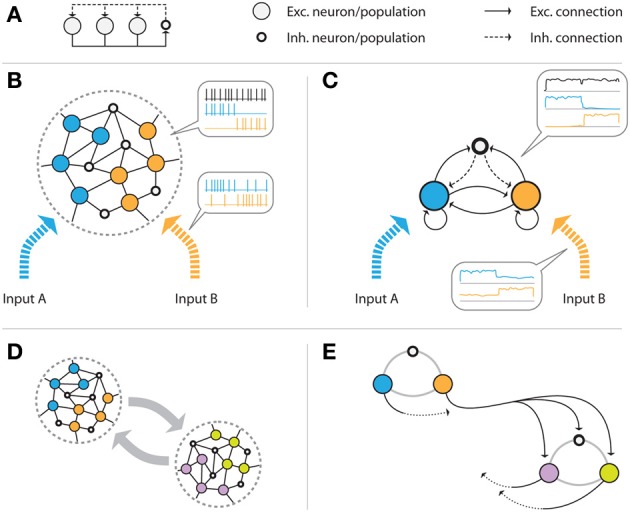Figure 1.

Illustration of the network model. (A) Abstract representation of a WTA circuit, where several excitatory units project onto a common inhibitory unit, and receive global inhibitory feedback from that unit. (B) Example volume of the generic cortical structure that is assumed, consisting of (initially randomly connected) excitatory (pyramidal) cells and inhibitory interneurons. The color of the cells indicates the input channel they are connected to: some cells only receive input from the blue, others from the orange source. It is assumed that the volume is sufficiently small, such that all excitatory cells can be reached by the (short-ranged) axons of the inhibitory cells. If the connection strengths are tuned appropriately, the population receiving the stronger input signal will suppress the response of the weaker population via the global inhibitory feedback. (C) shows the mean field model of the same network that we construct by grouping excitatory neurons by their input source. The three resulting excitatory and interneuron populations are connected in an all-to-all fashion. (D,E) show multiple, distant volumes which are connected via long-range excitatory connections. Projections from one volume to another connect to all cells of the target volume. In (E), the two subgroups are approximated by networks of the type shown in (C), consisting of one inhibitory and several excitatory populations. The black, solid arrows represent exemplary excitatory connections from one population of one group to all populations of the other group. Equivalent connections, indicated by dotted arrows, exist for all of the excitatory populations.
